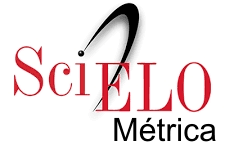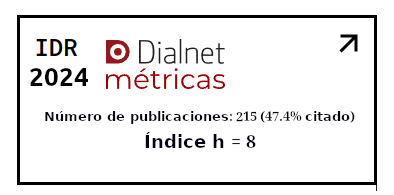Factors influencing the purchase of masks in Paraguayan consumers during the COVID-19 pandemic
Keywords:
Face masks, masks, consumer, pandemic, COVID-19, ParaguayAbstract
The objective of this research study is to determine the factors that influence the purchase of masks in Paraguayan consumers during the COVID-19 pandemic. It was based on a quantitative, non-experimental, cross-sectional and descriptive design approach. The population consisted of 521,559 inhabitants of Asunción with a sample size of 384 people and a response rate of 87%, that is, 333 participants successfully completed the survey. The only inclusion criterion was to live in the city of Asunción. The data collection instrument was composed of 11 closed questions, sent via WhatsApp for convenience in July 2020. The most relevant results were: 92.2% considered that the mask prevents COVID-19, 83.2% sought quality in the product and 59.9% they were willing to pay between 2,000 to 4,000 Gs. for each. It is concluded that there is awareness in the use of the mask in Paraguayan consumers, in addition to being a need for protection and mandatory use during the pandemic. At the same time, the most relevant factors in the decision to purchase the product translate into quality and as a means of protection against COVID-19.
Downloads
References
AA News. (4 de 5 de 2020). Los cinco efectos inesperados que ha dejado la pandemia de la COVID-19. Agencia Anadolu. Recuperado de https://www.aa.com.tr/es/mundo/los-cinco-efectos-inesperados-que-ha-dejado-la-pandemia-de-la-covid-19/1828405
Brienen, N., Timen, A., Wallinga, J., Van Steenbergen, J., y Tenius, P. (2010). The effect of mask use on the spread of influenza during a pandemic. Risk Analysis, 30(8), 1210-1218. doi:10.1111/j.1539-6924.2010.01428.x
DGEEC. (2015). Población Paraguay 2020 por departamento y sexo según proyección. Dirección General de Estadísticas, Encuestas y Censo. Recuperado de https://www.dgeec.gov.py/vt/Poblacion-Paraguay-2020-por-departamento-y-sexo-segun-proyeccion.php
EDMTOV. (25 de 5 de 2020). El tapabocas se volvió una nueva prenda de vestir. Portafolio.com. Recuperado de https://www.portafolio.co/economia/el-tapabocas-se-volvio-una-nueva-prenda-de-vestir-541110
EFE. (8 de 6 de 2020). Las nueva recomendaciones de la OMS con los tapabocas. Portafolio.com. Recuperado de https://www.portafolio.co/economia/coronavirus-noticias-las-nuevas-recomendaciones-de-la-oms-con-los-tapabocas-541550
elcanciller. (24 de 5 de 2020). La ¿moda? de los tapabocas: creatividad al servicio de la pandemia. elCanciller.com. Recuperado de https://elcanciller.com/la-moda-de-los-tapabocas-creatividad-al-servicio-de-la-pandemia/
FDA. (5 de 6 de 2020). Uso de respiradores, tapabocas desechables y cubiertas de tela para la cara en el Sector Alimentario y Agrícola durante la pandemia de la enfermedad del coronavirus (COVID-19). aProductor U.S. Food and Drug Administration. Recuperado de https://www.fda.gov/food/food-safety-during-emergencies/uso-de-respiradores-tapabocas-desechables-y-cubiertas-de-tela-para-la-cara-en-el-sector-alimentario
Infonegocios. (23 de 4 de 2020). Tipos de tapabocas y usos: La tendencia es establecer su uso obligatorio en la población. Infonegocios.com. Recuperado de https://infonegocios.com.py/y-ademas/tipos-de-tapabocas-y-usos-la-tendencia-es-establecer-su-uso-obligatorio-en-la-poblacion
Jones, R., y Adida, E. (2013). Selecting nonpharmaceutical interventions for influenza. Risk Analysis, 33(1), 1473-1488.
Lau, J., Tsui, H., Lau, M., y Yang, X. (2004). SARS transmission, risk factors, and prevention in Hong Kong. Emerging Infectious Diseases, 10(4), 587-592. doi: 10.3201/eid1004.030628
Leung, N., Chu, D., Shiu, E., Chan, K., McDevitt, J., Hau, B., y Cowling, B. (2020). Respiratory virus shedding in exhaled breath and efficacy of face masks. Nature medicine (26), 676-680. doi:10.1038/s41591-020-0843-2
MSPYBS. (2020). Asintomáticos: Cuál es el riesgo de transmisión del cOVID-19 entre ellos?. Ministerio de Salud Pública y Bienestar Social. Recuperado de https://www.mspbs.gov.py/portal/21606/asintomaticos-iquestcual-es-el-riesgo-de-transmision-del-covid-19-entre-ellos.html
Picco, J., González, E., Wolff, S., Gómez, V., y Wolff, D. (2020). Aspectos psicosociales de la pandemia COVID-19 en la población de. Revista Argentina de Cardiología, 88(3), 207-210.
Quiroz, F. (2020). Mascarillas quirúrgicas a propósito del COVID-19: Algunos aspectos técnicos. Revista Colombiana de Cirugía, 35(2), 200-202. doi:10.30944/20117582.620
Tracht, S., Del Valle, S., y Edwards, B. (2012). Economic analysis of the use of facemasks during pandemic (H1N1) 2009. Journal of Theoretical Biology, 300, 161-172. doi:10.1016/j.jtbi.2012.01.032
Published
How to Cite
Issue
Section
License
Copyright (c) 2021 ACADEMO Revista de Investigación en Ciencias Sociales y Humanidades

This work is licensed under a Creative Commons Attribution 4.0 International License.








